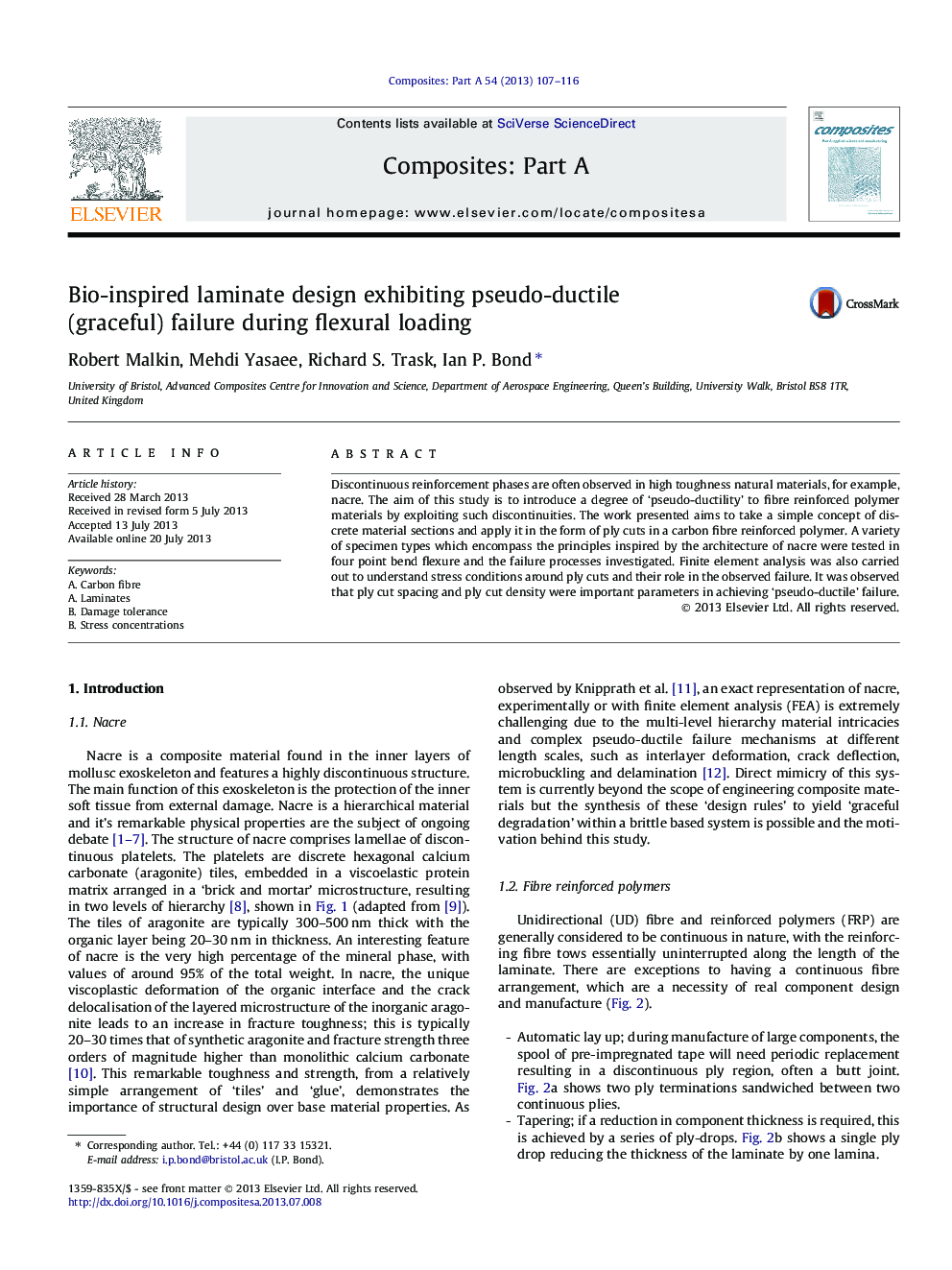| کد مقاله | کد نشریه | سال انتشار | مقاله انگلیسی | نسخه تمام متن |
|---|---|---|---|---|
| 7892488 | 1509917 | 2013 | 10 صفحه PDF | دانلود رایگان |
عنوان انگلیسی مقاله ISI
Bio-inspired laminate design exhibiting pseudo-ductile (graceful) failure during flexural loading
ترجمه فارسی عنوان
طراحی لمینیت بیوگرافی الهام بخش نمایش شکستگی شفاف (گرافیکی) در هنگام بارگذاری خمشی
دانلود مقاله + سفارش ترجمه
دانلود مقاله ISI انگلیسی
رایگان برای ایرانیان
کلمات کلیدی
ترجمه چکیده
فازهای تقویت قطع اغلب در مواد طبیعی با شدت بالا، به عنوان مثال، برنز دیده می شود. هدف از این مطالعه معرفی یک درجه "شبه انعطاف پذیری" به مواد پلیمری تقویت شده با استفاده از چنین اختلالاتی است. کار ارائه شده با هدف به دست آوردن یک مفهوم ساده از بخش های گسسته مواد و اعمال آن به صورت کاهش قطر در یک پلیمر تقویت شده با فیبر کربن است. انواع مختلفی از نمونه هایی که اصول الهام گرفته از معماری نسوز را شامل می شوند در چهار نقطه خمش خمشی و فرایندهای شکست بررسی شدند. تجزیه و تحلیل عنصر محدود نیز برای درک شرایط تنش در اطراف قطعه قطعه و نقش آنها در شکست مشاهده شده انجام شده است. مشاهده شد که تراکم برش چقرمگی و چگالی برشی چقرمگی پارامترهای مهم در دستیابی به شکست پلاستیکی هستند.
موضوعات مرتبط
مهندسی و علوم پایه
مهندسی مواد
سرامیک و کامپوزیت
چکیده انگلیسی
Discontinuous reinforcement phases are often observed in high toughness natural materials, for example, nacre. The aim of this study is to introduce a degree of 'pseudo-ductility' to fibre reinforced polymer materials by exploiting such discontinuities. The work presented aims to take a simple concept of discrete material sections and apply it in the form of ply cuts in a carbon fibre reinforced polymer. A variety of specimen types which encompass the principles inspired by the architecture of nacre were tested in four point bend flexure and the failure processes investigated. Finite element analysis was also carried out to understand stress conditions around ply cuts and their role in the observed failure. It was observed that ply cut spacing and ply cut density were important parameters in achieving 'pseudo-ductile' failure.
ناشر
Database: Elsevier - ScienceDirect (ساینس دایرکت)
Journal: Composites Part A: Applied Science and Manufacturing - Volume 54, November 2013, Pages 107-116
Journal: Composites Part A: Applied Science and Manufacturing - Volume 54, November 2013, Pages 107-116
نویسندگان
Robert Malkin, Mehdi Yasaee, Richard S. Trask, Ian P. Bond,
